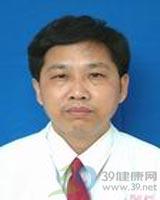
科室成员: 医生5位、主任医师3位
详细介绍:
● 率先在全国开展流变溶栓术治疗血栓性疾病
● 在大动脉疾病的腔内治疗、外周动脉疾病、神经介入、血栓病及肿瘤治疗领域处于全国先进水平
科室介绍
我院介入血管外科系全国首创将介入治疗与血管外科治疗有机结合形成优势互补的科室。它既保留了外科开放手术的传统,同时将血管腔内治疗微创、高效的特点引入诊断治疗当中,极大地提高了诊治率,拓展了治疗范围。科室成立以来,率先在全国开展流变溶栓术治疗血栓性疾病,在华南地区首先开展了大动脉疾病的腔内治疗、糖尿病足治疗、颅内血管成形术治疗、脑保护装置下颈动脉腔内治疗等。使我科在大动脉疾病的腔内治疗、外周动脉疾病、神经介入、血栓病及肿瘤治疗领域处于全国先进地位。目前我们的治疗范围涵盖所有血管疾病及肿瘤疾病。
医疗特色项目
● 腹主动脉瘤及胸主动脉夹层
腹主动脉瘤:是一种动脉扩张性疾病,危害极大。动脉硬化是动脉瘤的基本原因。此病主要发生于老年人群。它犹如体内的一颗定时炸弹,一旦破裂,死亡率高达50%-80%。患者多数无明显症状,多在体检时发现腹部出现搏动性包块。本病的治疗主要包括
1.腹主动脉瘤切除,人工血管置换。
2.血管腔内治疗。创伤小,恢复快。
主动脉夹层:是最复杂、最危险的心血管疾病之一。其发作与高血压关系密切,死亡率极高。多以剧烈胸痛为首发症状,合并有致命的多器官并发症。目前主要采取血管腔内治疗。
● 下肢动脉硬化闭塞症
下肢动脉硬化闭塞症是全身动脉粥样硬化在下肢的表现,动脉硬化导致的斑块不断扩大和继发血栓的形成,使动脉变得狭窄。当达到一定程度,形成管腔闭塞时,因血供不足而导致下肢发凉、麻木,腿部肌肉痉挛,行走后疼痛等一系列症状。疾病后期丧失行走能力,最终会出现患足溃疡或者发黑坏疽,甚至截肢。目前主要采取的手段有:1. 血管腔内治疗。2. 人工血管搭桥。
● 糖尿病足
糖尿病足是由于糖尿病患者血管病变导致肢端缺血和周围神经病变而失去感觉,且并发感染而引起。糖尿病患病率逐年上升,该病的发病率也逐渐升高。具有较高的致残率。目前最理想的治疗方法为血管腔内治疗。
● 颈动脉狭窄
颈动脉狭窄的主要原因是动脉粥样硬化。它与脑中风、一过性晕厥与黒曚密切相关,有较高的发病率、致残率。目前公认的的治疗为颈动脉支架置入术与颈动脉内膜剥离术。
● 脑中风
脑中风是一种严重危害人们健康和生命的疾病,具有发病率高、死亡率高、残疾率高的特点。介入治疗技术对急性缺血性脑中风与颅内出血性脑中风进行治疗均有良好的效果。
● 下肢静脉疾病
我科采用内镜技术对大隐静脉曲张并交通支导致的溃疡进行治疗取得良好的疗效。
对急性下肢深静脉血栓采用积极的导管溶栓、除栓保护静脉瓣膜,能迅速地减轻症状,降低后遗症带来的不良症状。
● 肿瘤
介入法对肿瘤的治疗,尤其是肝癌的治疗有着不可替代的优势,通过肿瘤血管栓塞与局部化疗以及消融治疗为肿瘤根治提供机会,对中晚期患者也起到较好的疗效。
专家介绍
王晓白 主任医师 血管腔内治疗、神经介入治疗及肿瘤介入治疗
张红 主任医师 血管外科及肿瘤介入治疗
张艳 副主任医师 外周动脉疾病介入治疗,下肢动脉硬化闭塞症介入综合治疗
出诊时间 每周一至周五 (节假日除外)
咨询电话 38688420 38688503 38688417
INTRODUCTION OF THE INTERVENTIONAL RADIOLOGY AND VASCULAR SURGERY DEPARMENT
As the inevitable aging process progresses in all of us, our circulatory system will be among the first to degenerate. The vascular well-being has become our top health concern due to the ever-growing population of the elderly seniors and the premature aging caused by our unhealthy life styles. To better treat the many blood vessel related health problems, the traditional vascular surgery has joined by the ever more popular interventional radiology, and continue to evolve in to one integrated medical specialty. Instead of the conventional vascular surgeries, most of the operations can be replaced by the non-surgical techniques with the basis of interventional radiology and the vascular surgery. There are obvious benefits of this newfound marriage of the two specialties and that is why we are the first inChinato have cooperated the Department of Interventional Radiology and Vascular Surgery with the specialty infirmary into our hospital.
We can treat diseases associated with:
1. Weakened and dilated vessel walls. Examples like aneurysm of the visceral organs and the extremities can be all treated by placing a detachable coil in the artery to reduce aneurysm. Dissection and aneurysm of the aorta can be treated by inserting various types of artificial stents(tubular device) to give support within the indicated segment of the artery wall. Started in 1999, our hospital was the first in southern china to successfully treat patients using these micro-invasive interventional techniques to minimize the bleeding and other complications normally associated with an open surgery. With the foundation early on we continue to have astounding success rate and still strive to be the best.
2. Narrowing or obstructed arteries like sclerotic arteries of the extremities due to arterial sclerosis, occlusive cerebral/spinal/ carotid artery and renal hypertension. All of them can be treated with P.T.A. (ballooning) or placing the artificial stents to improve the blood flow. The success rate is comparable to the conventional surgery yet our success rate is the highest in the region.
3. Diseases that associated with veins including thrombosis, varix, A-V shunts, Budd-Chiari Syndrome, inferior vena cava abnormalities, Klippel-Trenqunay-Weber Syndrome, lower extremities varices and deep vein valvular incompetence. To treat them, our department is again the first to master the techniques like rheolytic thrombectomy, etc., and still is the leader in the nation to date.
4. Malformation of the arteries and veins of the visceral organs. The gastrointestinal tract, the brine, and the extremities. Only not long ago there was still no definite treatment for those malformations but now we can use the interventional transcatheter techniques to treat this kind of vascular deformities throughout the body with promising therapeutic results.
5. Tumors (benign or malignant)(primary or secondary). For example: Hepatic/ pulmonary/mesenteric/pancreatic/intestinal/esophageal/renal tumors, hemangioma, Sarcoma of the limps, and the myoma of the uterus. Our hospital once again is the pioneer in using the interventional techniques to treat all types of tumors.
We have a well-organized team of experts with over 20 years of experience. Our enthusiastic stuff members are responsible and caring. We are constantly on the leading edge of the newest innovation in our field. Our aim is to always be the best so we can serve our community and our friends overseas.









